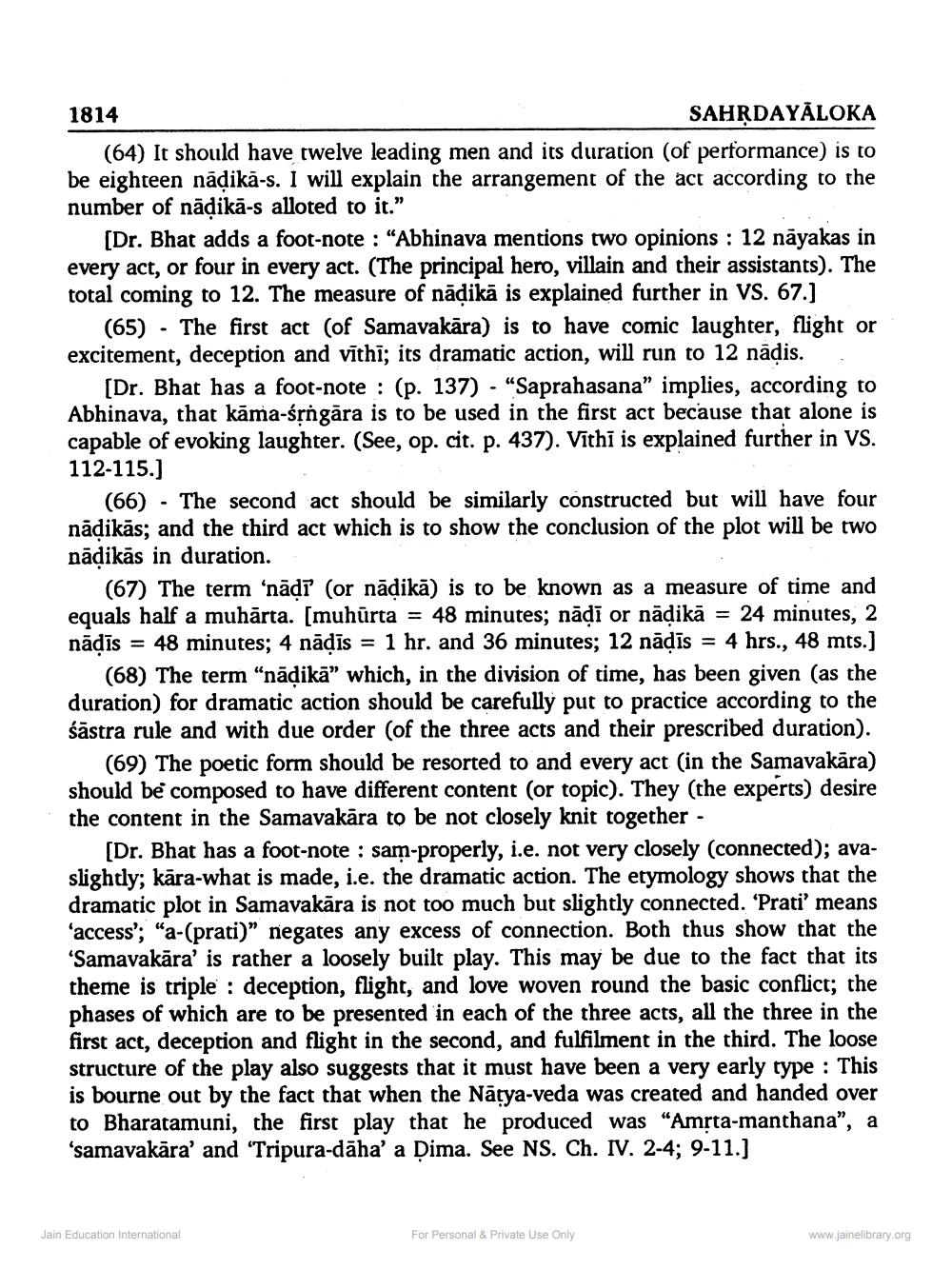________________
1814
SAHRDAYĀLOKA
(64) It should have twelve leading men and its duration (of performance) is to be eighteen nāļikā-s. I will explain the arrangement of the act according to the number of nädikā-s alloted to it."
(Dr. Bhat adds a foot-note : "Abhinava mentions two opinions : 12 nāyakas in every act, or four in every act. (The principal hero, villain and their assistants). The total coming to 12. The measure of nādikā is explained further in VS. 67.)
(65) - The first act (of Samavakāra) is to have comic laughter, flight or excitement, deception and vīthi; its dramatic action, will run to 12 nādis. .
[Dr. Bhat has a foot-note : (p. 137) - "Saprahasana” implies, according to Abhinava, that kāma-śrngāra is to be used in the first act because that alone is
pable of evoking laughter. (See, op. cit. p. 437). Vithi is explained further in VS. 112-115.)
(66) - The second act should be similarly constructed but will have four nådikās; and the third act which is to show the conclusion of the plot will be two nāļikās in duration
(67) The term 'nādi (or nādikā) is to be known as a measure of time and equals half a muhārta. [muhurta = 48 minutes; nādī or nāļikā = 24 minutes, 2 nādīs = 48 minutes; 4 nādis = 1 hr. and 36 minutes; 12 nādīs = 4 hrs., 48 mts.]
(68) The term "nādikā” which, in the division of time, has been given (as the duration) for dramatic action should be carefully put to practice according to the śāstra rule and with due order (of the three acts and their prescribed duration).
(69) The poetic form should be resorted to and every act in the Samavakāra) should be composed to have different content (or topic). They (the experts) desire the content in the Samavakāra to be not closely knit together -
(Dr. Bhat has a foot-note : sam-properly, i.e. not very closely (connected); avaslightly; kāra-what is made, i.e. the dramatic action. The etymology shows that the dramatic plot in Samavakāra is not too much but slightly connected. ‘Prati' means 'access'; "a-(prati)" negates any excess of connection. Both thus show that the ‘Samavakāra' is rather a loosely built play. This may be due to the fact that its theme is triple : deception, flight, and love woven round the basic conflict; the phases of which are to be presented in each of the three acts, all the three in the first act, deception and flight in the second, and fulfilment in the third. The loose structure of the play also suggests that it must have been a very early type : This is bourne out by the fact that when the Natya-veda was created and handed over to Bharatamuni, the first play that he produced was “Amrta-manthana", a 'samavakāra' and 'Tripura-dāha' a Dima. See NS. Ch. IV. 2-4; 9-11.)
Jain Education International
For Personal & Private Use Only
www.jainelibrary.org




